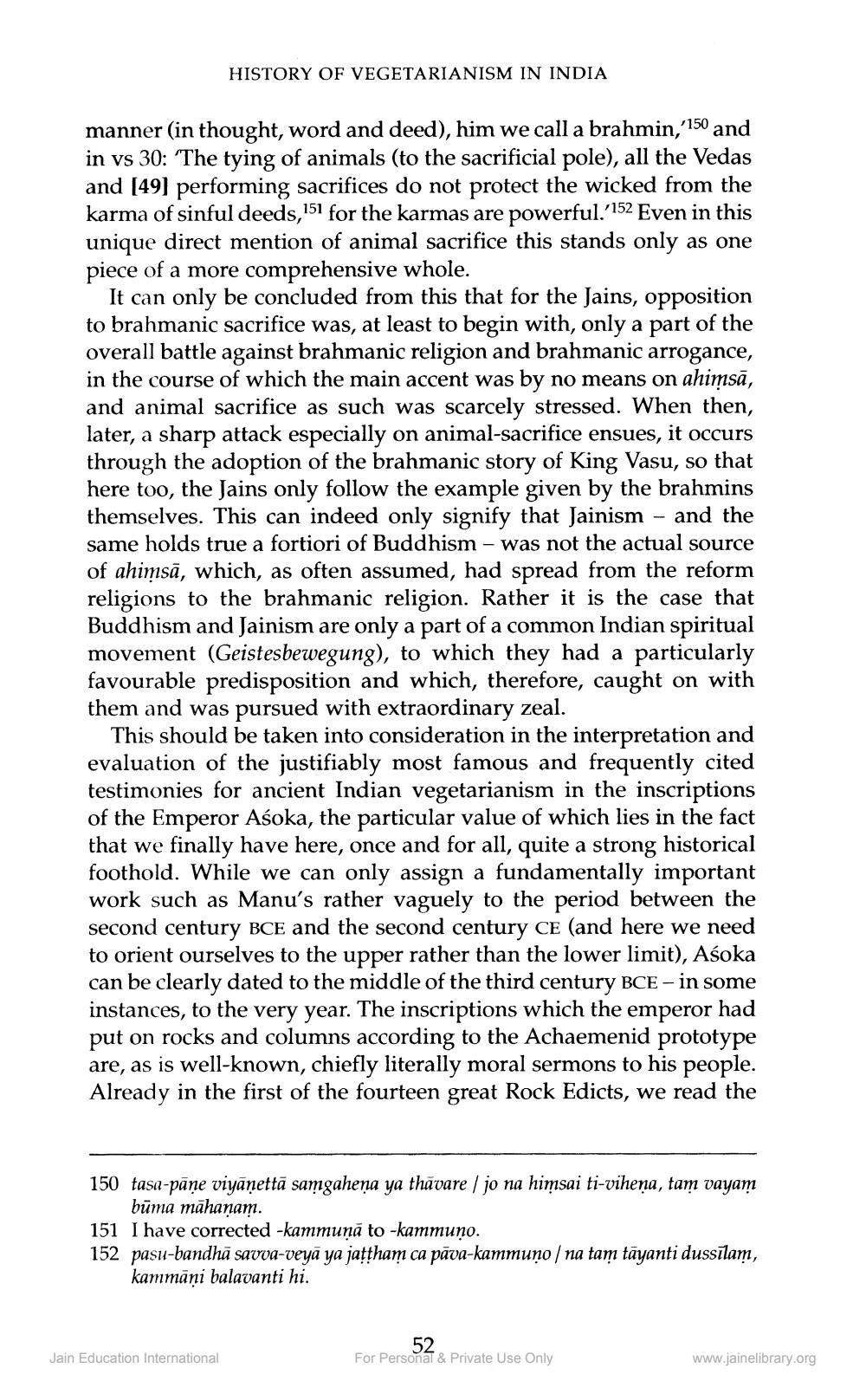________________
HISTORY OF VEGETARIANISM IN INDIA
manner (in thought, word and deed), him we call a brahmin,'150 and in vs 30: "The tying of animals (to the sacrificial pole), all the Vedas and (49) performing sacrifices do not protect the wicked from the karma of sinful deeds,151 for the karmas are powerful.'152 Even in this unique direct mention of animal sacrifice this stands only as one piece of a more comprehensive whole.
It can only be concluded from this that for the Jains, opposition to brahmanic sacrifice was, at least to begin with, only a part of the overall battle against brahmanic religion and brahmanic arrogance, in the course of which the main accent was by no means on ahimsā, and animal sacrifice as such was scarcely stressed. When then, later, a sharp attack especially on animal-sacrifice ensues, it occurs through the adoption of the brahmanic story of King Vasu, so that here too, the Jains only follow the example given by the brahmins themselves. This can indeed only signify that Jainism - and the same holds true a fortiori of Buddhism - was not the actual source of ahimsā, which, as often assumed, had spread from the reform religions to the brahmanic religion. Rather it is the case that Buddhism and Jainism are only a part of a common Indian spiritual movement (Geistesbewegung), to which they had a particularly favourable predisposition and which, therefore, caught on with them and was pursued with extraordinary zeal.
This should be taken into consideration in the interpretation and evaluation of the justifiably most famous and frequently cited testimonies for ancient Indian vegetarianism in the inscriptions of the Emperor Asoka, the particular value of which lies in the fact that we finally have here, once and for all, quite a strong historical foothold. While we can only assign a fundamentally important work such as Manu's rather vaguely to the period between the second century BCE and the second century CE (and here we need to orient ourselves to the upper rather than the lower limit), Asoka can be clearly dated to the middle of the third century BCE - in some instances, to the very year. The inscriptions which the emperor had put on rocks and columns according to the Achaemenid prototype are, as is well-known, chiefly literally moral sermons to his people. Already in the first of the fourteen great Rock Edicts, we read the
150 tasa-pāne viyānetta samgahena ya thāvare / jo na himsai ti-vihena, tam vayam
būma māhanam. 151 I have corrected -kammunā to -kammuno. 152 pasu-bandhā savva-veya ya jattham ca pāva-kammuno / na tam tāyanti dussīlam,
kammāni balavanti hi.
52
Jain Education International
For Personat & Private Use Only
www.jainelibrary.org




